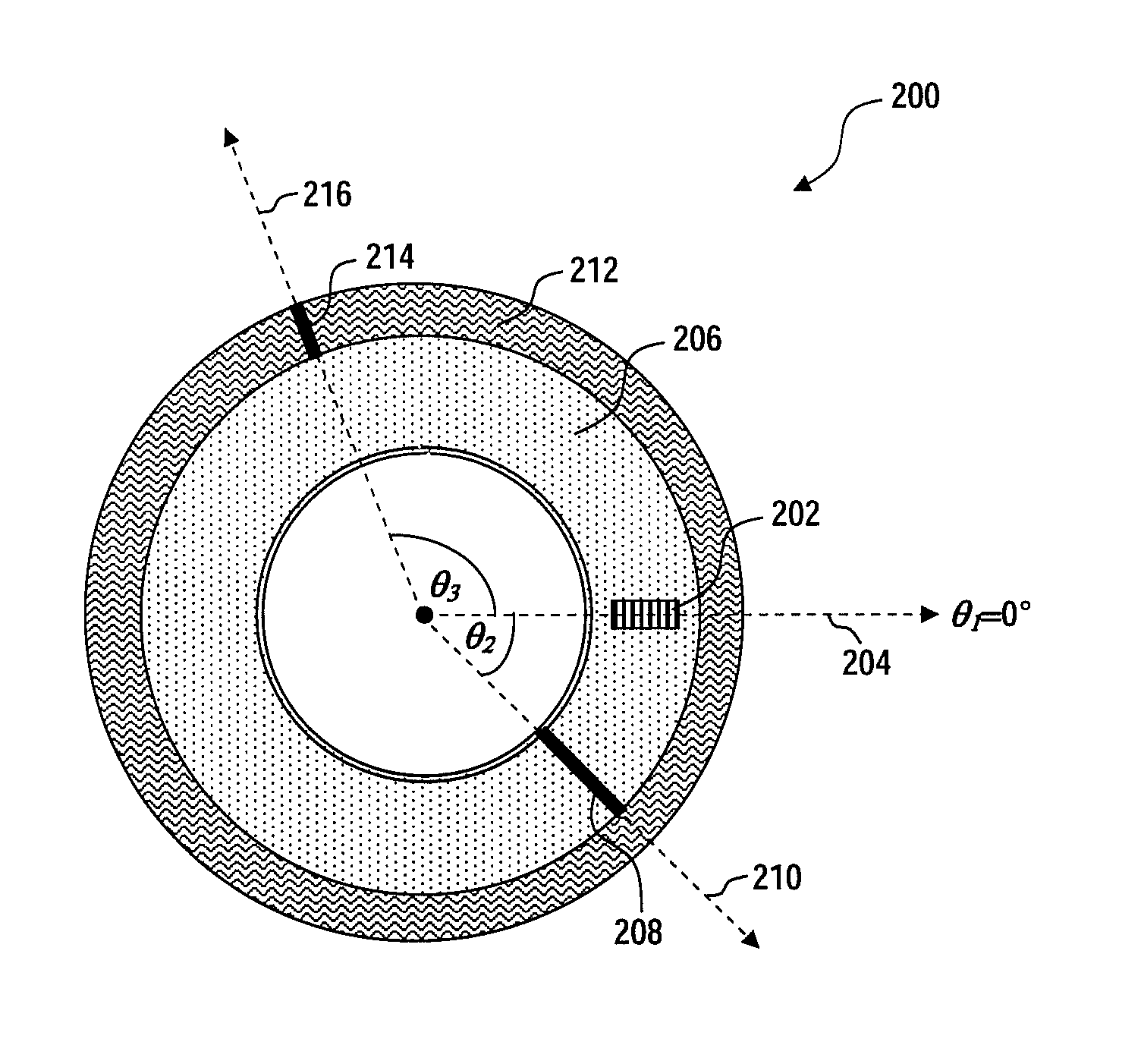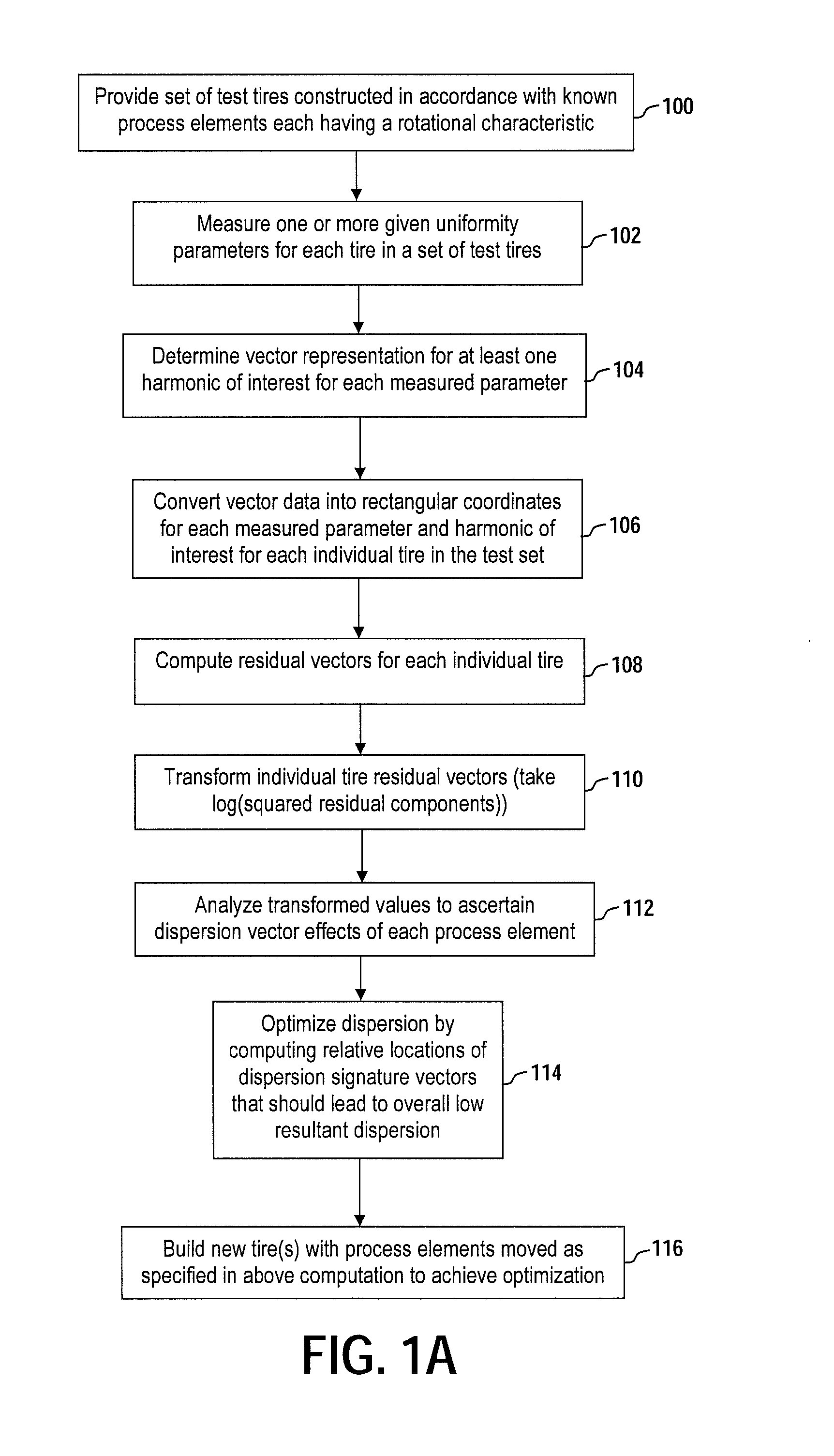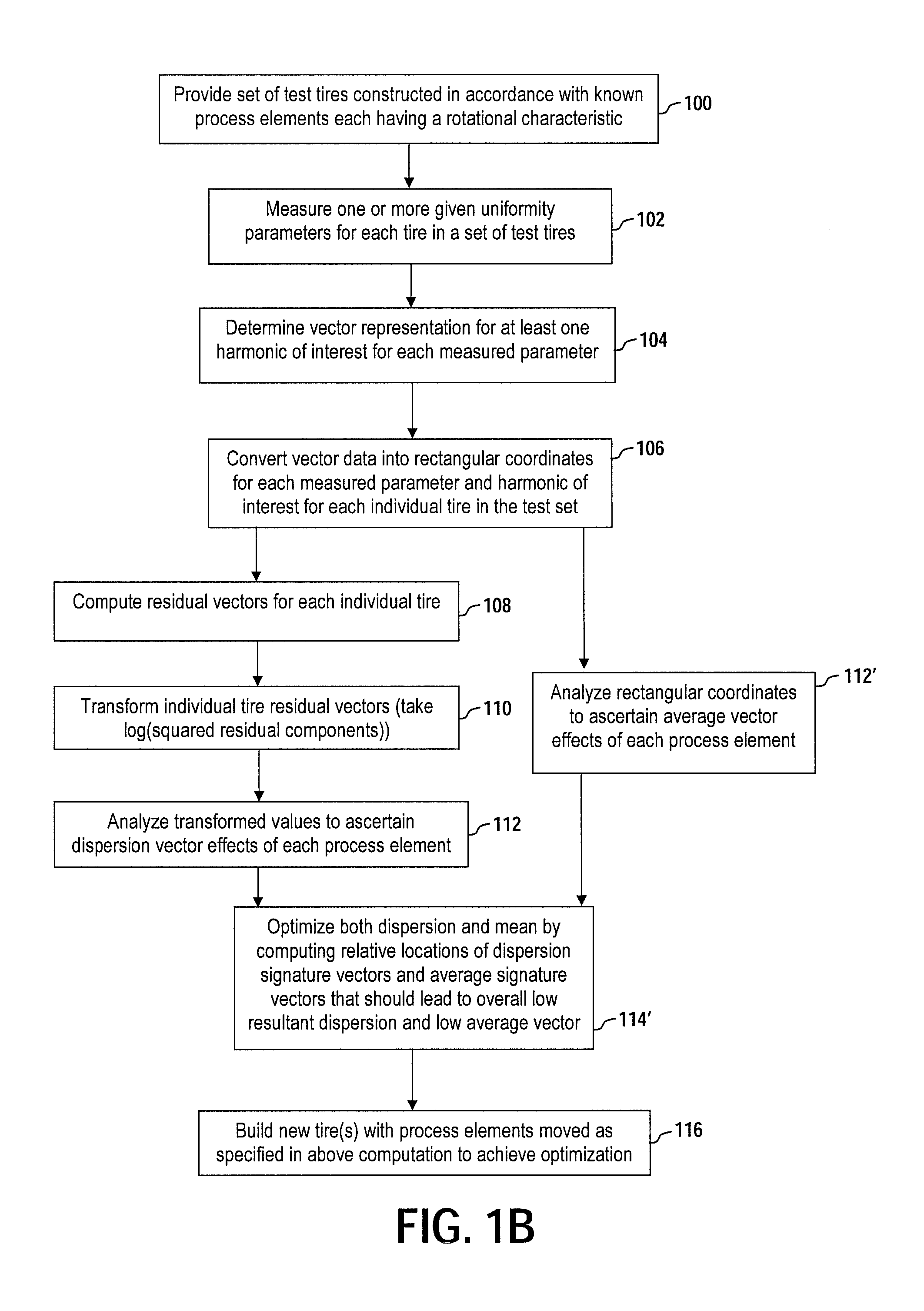Tire uniformity through dispersion optimization
- Summary
- Abstract
- Description
- Claims
- Application Information
AI Technical Summary
Benefits of technology
Problems solved by technology
Method used
Image
Examples
example
[0063]To better appreciate the processes illustrated in FIGS. 1A and 1B, a numerical example of dispersion analysis is presented. The results below provide simulated data (i.e., test results for hypothetical tires), but exemplify the types of improvements in uniformity achieved from applying the subject analysis to actual manufactured tires. The same type of input data available from the following hypo would be available for actual manufactured tires, and the same regression analysis techniques and equation fitting would be employed. Comparison of resulting output data has constructively verified that similar outputs and corresponding yield values are achieved from analysis of hypothetical and actual tire data. The results below are helpful to explain the disclosed techniques as well as demonstrate improvements in uniformity and corresponding customer yield.
[0064]Consider a hypothetical set of tires having non-uniformity contributions from three process elements A, B and C and a var...
PUM
| Property | Measurement | Unit |
|---|---|---|
| Pressure | aaaaa | aaaaa |
| Mass | aaaaa | aaaaa |
| Residual entropy | aaaaa | aaaaa |
Abstract
Description
Claims
Application Information
 Login to View More
Login to View More - R&D
- Intellectual Property
- Life Sciences
- Materials
- Tech Scout
- Unparalleled Data Quality
- Higher Quality Content
- 60% Fewer Hallucinations
Browse by: Latest US Patents, China's latest patents, Technical Efficacy Thesaurus, Application Domain, Technology Topic, Popular Technical Reports.
© 2025 PatSnap. All rights reserved.Legal|Privacy policy|Modern Slavery Act Transparency Statement|Sitemap|About US| Contact US: help@patsnap.com



